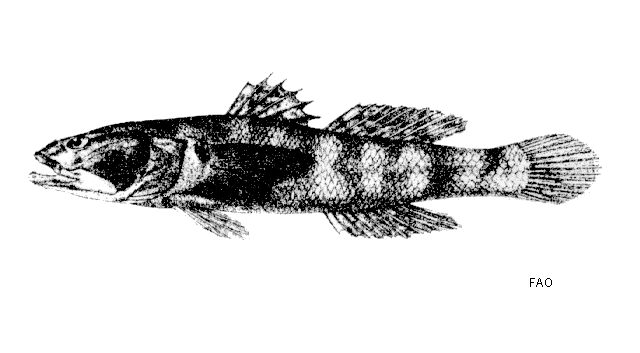| Gobiidae (Gobies), subfamily: Gobiinae |
| 10 cm SL (male/unsexed) |
|
demersal; freshwater; brackish; marine; depth range 0 - 4 m, amphidromous |
| Indo-West Pacific: western India to the Mekong. |
|
Dorsal spines (total): 6-7; Dorsal soft rays (total): 10-10; Anal spines: 1-1; Anal soft rays: 8-9. Characterized by pale grey body color with irregular brown blotches on cheek, without pronounced dark patch covering top of head; presence of four dark brown saddles (including one on nape) dorsally on side; caudal fin base with diffuse blackish bar; presence of dark wedge-shaped mark on pectoral fin base; fully united pelvic fins, frenum present; rounded caudal fin; longitudinal scale series 36-44; presence of barbels on snout, tip of chin, and ventrally below lower jaw (except none on posterior mandible); strongly ctenoid scales; cheek and opercle without scales; deeply embedded nape scales; presence of sensory pores on head, including two preopercular pores; depth of body about 5.9 in SL (Ref. 90102). |
| Inhabits mud and rock bottoms near shore in 0-4 m (Ref. 90102). Found in coastal waters, estuaries (Ref. 4833), tidal rivers, canals and creeks (Ref. 12693). Feeds on small fishes, crustaceans and insects. Not seen in markets (Ref. 12693). |
|
Least Concern (LC); Date assessed: 28 June 2018 Ref. (130435)
|
| harmless |
Source and more info: www.fishbase.org. For personal, classroom, and other internal use only. Not for publication.

